New technologies to increase coffee-maize system profitability
To demostrate the advances of the project “Increasing the profitability of maize-coffee systems” conducted by CIMMYT in Colombia over the past 10 years in collaboration with the National Federation of Colombian Coffee Producers (FEDERECAFE, Spanish acronym), two field days were held at the Paraguaycito–Quindío (29 April) and La Catalina–Risaralda (7 May) Experiment Stations belonging to CENICAFE, FEDERECAFE’s research unit. At these events, attended by 158 representatives of the Local Coffee Growers’ Committees and the National Federation of Cereal Growers (FENALCE, Spanish acronym), the latest advances in the areas of climate change, agronomy and genetic improvement were presented.
Agronomy
In the field of agronomy, there were demonstrations on how to use a manual maize planter and the GreenSeeker sensor. These inventions are available to farmers today thanks to the work and perseverance of Bill Raun and his colleagues at Oklahoma State University, USA.
In the 1980s, when Bill was working for CIMMYT’s Agronomy Program for Central America, he realized the risks farmers faced when growing maize. The seed was treated with insecticides and fungicides to protect it and promote germination and crop establishment. Farmers would take the seed in their bare hands and put it into the soil, in holes made with the help of a stick; they did not use gloves or any kind of protection.
More than 20 years later, farmers finally have a manual planter. The most important parts of the planter are a plastic tube where the seed is placed, a cylinder that regulates seed drop and a device at the end of the planter that passes the seed from the plastic tube into the soil. During the sowing demonstrations, the attendees observed the excellent germination of a plot sown with the planter the previous week. The planter can also be used for fertilization and is ideal for planting maize on the very steep slopes where coffee is grown and where mechanization is not possible. Most of the region’s coffee growers are small-scale farmers whose land holdings average 1.54 hectares.
Argemiro Moreno, former CENICAFE scientist, spoke on efficient nitrogen use for maize crops in Colombia’s coffee growing region. He also explained the basics of GreenSeeker use to calculate the precise amount of nitrogen that plants need for maximum growth and production and to avoid polluting the atmosphere or the ground water through excess fertilizer use. There was also a demonstration of how to use the GreenSeeker in the field and for converting the readings into fertilizer dosage recommendations (by cell phone at www.nue.okstate.edu).
Genetic improvement––biofortified maize
As Luis Narro, CIMMYT-Colombia, explained during both field days, biofortification uses conventional breeding to develop varieties with higher content of micronutrients such as iron, zinc and provitamin A. Normal maize grain contains, on average, 20 ppm Zn and 2 ppm pro-vitamin A, whereas biofortified maize being developed at CIMMYT with support by HarvestPlus contains 32 ppm Zn (white maize) and 8-10 ppm provitamin A (orange maize).
As a HarvestPlus activity, 81 white experimental hybrids with high zinc content and 81 orange hybrids with high provitamin A content are being evaluated in Colombia’s coffee growing region. Preliminary results at La Catalina Experiment Station indicate that the best hybrid with high Zn content (8.9 t/ha) yielded 10% more than the normal (check) hybrid and showed less ear rot and less tar spot damage. The yield of the best hybrid with high provitamin A content was 5.4 t/ha, similar to that of the normal check.
At the same time, the HarvestPlus team at CIAT, in collaboration with small food product manufacturers in Colombia’s Cauca Valley, are conducting pilot studies aimed at developing food products from biofortified maize, as well as sensory studies and studies on micronutrient retention and on shelf life. Consequently, it’s very possible that cropping and consumption of biofortified maize will be promoted in Colombia’s coffee region as an alternative for improving food security.
* This is the second part of a two-part report; the first was published in the previous issue of the CIMMYT Informa.
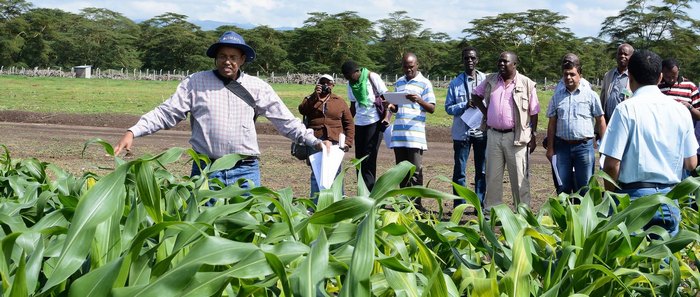
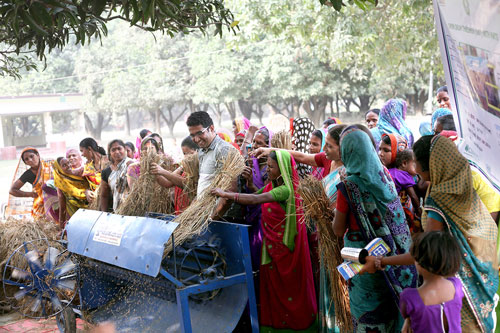
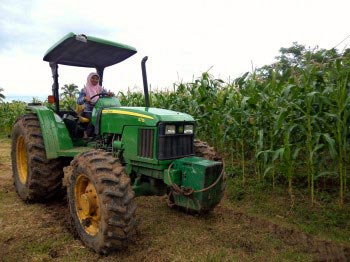 International Women’s Day on March 8, offers an opportunity to recognize the achievements of women worldwide. This year, CIMMYT asked readers to submit stories about women they admire for their selfless dedication to either maize or wheat. In the following story, Amanda Niode writes about her Super Woman of Maize, Asriani Anie Annisa Hasan of the Gorontalo Corn Information Center and Food Security Agency.
International Women’s Day on March 8, offers an opportunity to recognize the achievements of women worldwide. This year, CIMMYT asked readers to submit stories about women they admire for their selfless dedication to either maize or wheat. In the following story, Amanda Niode writes about her Super Woman of Maize, Asriani Anie Annisa Hasan of the Gorontalo Corn Information Center and Food Security Agency.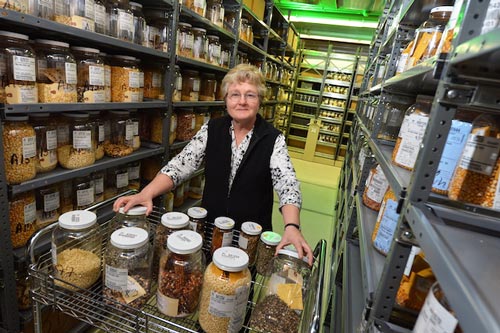
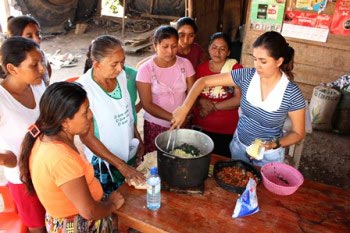 International Women’s Day on March 8, offers an opportunity to recognize the achievements of women worldwide. This year, CIMMYT asked readers to submit stories about women they admire for their selfless dedication to either maize or wheat. In the following story, Haley Kirk writes about her Super Woman of Maize, Jennifer Brito, food security coordinator at
International Women’s Day on March 8, offers an opportunity to recognize the achievements of women worldwide. This year, CIMMYT asked readers to submit stories about women they admire for their selfless dedication to either maize or wheat. In the following story, Haley Kirk writes about her Super Woman of Maize, Jennifer Brito, food security coordinator at 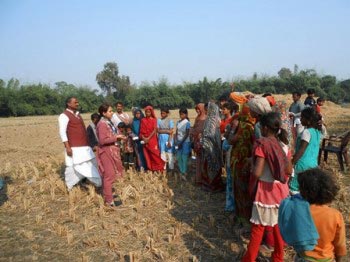 International Women’s Day on March 8, offers an opportunity to recognize the achievements of women worldwide. This year, CIMMYT asked readers to submit stories about women they admire for their selfless dedication to either maize or wheat. In the following story, scientist Velu Govindan writes about his Super Woman of Wheat, Chhavi Tiwari, a senior research associate at Banaras Hindu University.
International Women’s Day on March 8, offers an opportunity to recognize the achievements of women worldwide. This year, CIMMYT asked readers to submit stories about women they admire for their selfless dedication to either maize or wheat. In the following story, scientist Velu Govindan writes about his Super Woman of Wheat, Chhavi Tiwari, a senior research associate at Banaras Hindu University.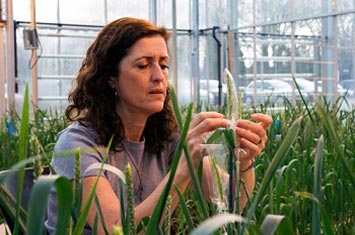 International Women’s Day on March 8, offers an opportunity to recognize the achievements of women worldwide. This year, CIMMYT asked readers to submit stories about women they admire for their selfless dedication to either maize or wheat. In the following story, wheat breeder Jessica Rutkoski writes about her Super Woman of wheat, Julie King, a research fellow at Britain’s
International Women’s Day on March 8, offers an opportunity to recognize the achievements of women worldwide. This year, CIMMYT asked readers to submit stories about women they admire for their selfless dedication to either maize or wheat. In the following story, wheat breeder Jessica Rutkoski writes about her Super Woman of wheat, Julie King, a research fellow at Britain’s 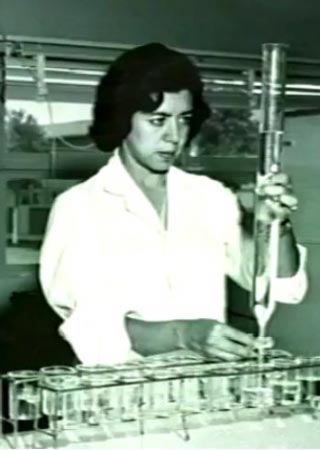 For International Women’s Day I would like to honor Dr. Evangelina Villegas, one of CIMMYT’s original “superwomen,” not only for the breakthroughs she made in her field, but for the positive impact she made on the world.
For International Women’s Day I would like to honor Dr. Evangelina Villegas, one of CIMMYT’s original “superwomen,” not only for the breakthroughs she made in her field, but for the positive impact she made on the world.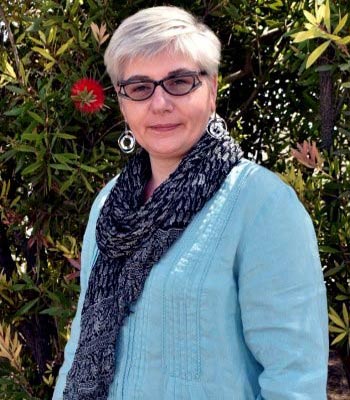 Gender research and outreach should engage men more effectively, according to Paula Kantor, CIMMYT gender and development specialist who is leading an ambitious new project to empower and improve the livelihoods of women, men and youth in wheat-growing areas of Afghanistan, Ethiopia and Pakistan.
Gender research and outreach should engage men more effectively, according to Paula Kantor, CIMMYT gender and development specialist who is leading an ambitious new project to empower and improve the livelihoods of women, men and youth in wheat-growing areas of Afghanistan, Ethiopia and Pakistan.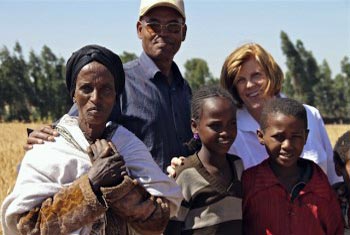 International Women’s Day on March 8, offers an opportunity to recognize the achievements of women worldwide. This year, CIMMYT asked readers to submit stories about women they admire for their selfless dedication to either maize or wheat. In the following story, Linda McCandless writes about her Super Woman of Wheat, Jeanie Borlaug Laube, chair of the Borlaug Global Rust Initiative.
International Women’s Day on March 8, offers an opportunity to recognize the achievements of women worldwide. This year, CIMMYT asked readers to submit stories about women they admire for their selfless dedication to either maize or wheat. In the following story, Linda McCandless writes about her Super Woman of Wheat, Jeanie Borlaug Laube, chair of the Borlaug Global Rust Initiative. At a time when women scientists were few and far between, Barbara McClintock made a name for herself as the most distinguished cytogeneticist in the field of science. From her early studies in genetics in the 1920s, to her 1940s breakthrough in mobile genetic elements, which led to her 1983 Nobel Prize, her legacy is one that still lingers today.
At a time when women scientists were few and far between, Barbara McClintock made a name for herself as the most distinguished cytogeneticist in the field of science. From her early studies in genetics in the 1920s, to her 1940s breakthrough in mobile genetic elements, which led to her 1983 Nobel Prize, her legacy is one that still lingers today.